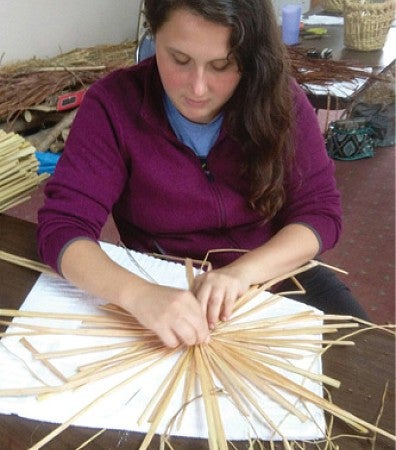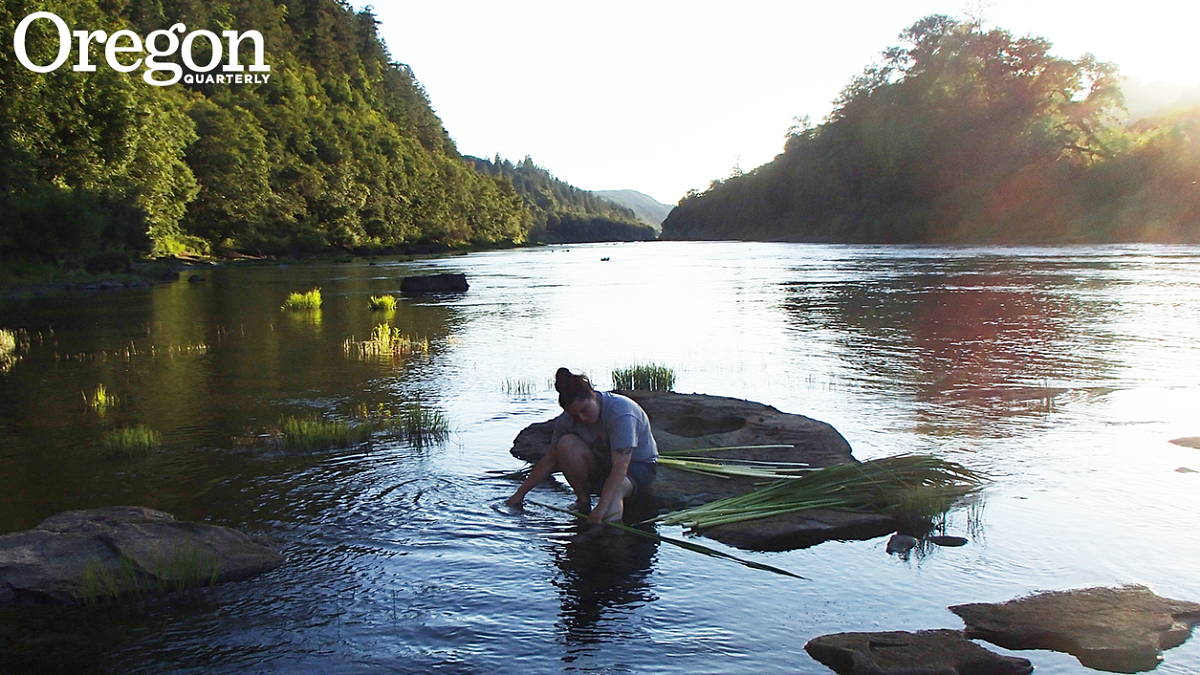On a bluff overlooking the water in Coos Bay’s Empire District is the Hollering Place, where the Hanis Coos Tribe once called out to others on the opposite side of the bay, passing along news or requesting transport by canoe.
That land has been returned to the Confederated Tribes of Coos, Lower Umpqua, and Siuslaw Indians (CTCLUSI), which includes the Hanis Coos. The CTCLUSI plan to restore the area for recreational and educational use by the tribes and public, including a new interpretive center.
Amanda Craig, a member of CTCLUSI who is pursuing a master’s degree in landscape architecture in the School of Architecture & Environment (SAE), is aiding that effort. She is helping to design the interpretative center, drawing on her cultural understanding and her training in landscape architecture. She’ll balance function with a focus on incorporating traditional materials throughout the landscape and facilities.

In projects such as that at the Hollering Place, Craig balances human use with the natural world. She designs landscapes in a “sustainable and still beautiful way” that leave the site and the community in a better place.
Born in 1985, Craig grew up in Anchorage. In 2001, her family moved to Coos Bay to be closer to Craig’s grandparents. Craig, who earned a bachelor’s degree in environmental science from the university in 2013, has helped monitor air and water quality on CTCLUSI lands.
While working for CTCLUSI’s Department of Natural Resources and Culture, Craig explored options through the UO to further her education and training; the landscape architecture program included design, a community focus, sustainability, and an opportunity for Craig to combine passions.
“I’ve always loved art and science,” says Craig. “Landscape architecture was everything I loved, all in one.”
Craig moved to Eugene last June to begin the graduate program, thanks in part to a Future Stewards Program scholarship, which aids Oregon tribal members who will work within a tribal community to support traditional culture, education, and economic development.
Each term, Craig participates in a studio class in which students propose design projects for real-world sites. For a project within Eugene’s Alton Baker Park, Craig took inspiration from a braid of sweetgrass, designing a football field–sized amphitheater.
Erin Moore, head of SAE, explains that the school cultivates exceptional future leadership in regional ecological design and land-use planning. Craig “will be one of these exceptional future leaders,” Moore says.
CTCLUSI echoes the sentiment.
Tribal Administrator Alexis Barry expects Craig’s input to be a great asset for the Hollering Place project.
“Amanda has brought her artistic sense and her deep understanding of the environment to work on the new cultural and interpretive center.” Barry says.
—By Anthony St. Clair
Anthony St. Clair is a freelance writer in Eugene.
Photos courtesy of Amanda Craig


